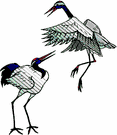N. Mockingbird eyes (and tongue)
I have cropped this pic to zoom in on the head and body (less the long tail)of the Northern Mockingbird I photographed yesterday at the Pueblo Reservoir. Besides providing some great eye and feather detail for my rather esoteric exercise about deciding the age of this bird, I think it provides those not concerned with such exercises with the opportunity to see a Northern Mockingbird "upclose". This includes the opportunity to see the bird's tongue (and toenails) which is something most of us don't often see on smaller birds unless someone has the bird "in-hand" at a banding station. As I have noted before, detail is best seen by double-clicking on the photo to enlarge it.
But the main point for age identification is the eye which appears to me to be gray-green. The iris of adult birds per Birds of North America online is ". . .light green-yellow to dark yellow or occasionally orange . . ." Field guides either say the eye is yellowish/orangish or show illustrations with a yellow eye for adults and grayish eyes for juveniles.
For comparison, see photos of adult Northern Mockingbirds at Cornell Lab of Ornithology (have to click again on the photo to enlarge it) or at Patuxent Wildlife Research Center (again double-click on all 3 photos to see eye color). Both of these are highly respected ornithology resources.
I will try to crop this photo for my next post just to the head to see if the eye will enlarge further.
SeEtta
Labels: birds, Northern Mockingbird










